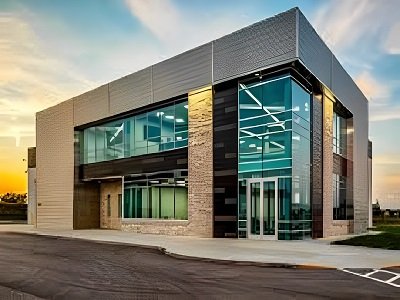TOWNSHIP PROJECT
Introduction to Township Projects
A township project refers to a large-scale, planned urban development that integrates residential, commercial, educational, healthcare, recreational, and infrastructural facilities. These projects aim to create a self-sufficient ecosystem within a single geographical area, often designed to cater to diverse demographic and socioeconomic groups. Township projects have gained prominence globally as urbanization accelerates and cities become overcrowded. They offer a sustainable solution for decongesting metropolitan areas while providing modern amenities and an enhanced quality of life. In India, township projects are often seen as transformative tools for real estate and urban development.
Key Features of a Township Project
Townships are meticulously planned to provide a balanced lifestyle. The essential components include:
1. Residential Spaces
- Townships typically feature a mix of housing options, including apartments, villas, and row houses, catering to various income levels.
- They are designed with modern layouts, ensuring optimal utilization of space while maintaining aesthetic appeal.
- Many projects also emphasize green living, incorporating eco-friendly practices like rainwater harvesting, solar panels, and energy-efficient construction.


2. Commercial Hubs
- Integrated shopping malls, retail spaces, and office complexes provide economic opportunities and convenience.
- These hubs encourage economic growth and reduce the need for residents to travel outside the township for work or shopping.
3. Educational Facilities
- Schools, colleges, and training institutes are strategically placed within the township to ensure easy access for families
- Many townships collaborate with reputed educational institutions to provide quality education.


4. Healthcare Services
- State-of-the-art hospitals and clinics form an integral part of township planning.
- These facilities cater to routine medical needs and emergencies, ensuring that residents have access to healthcare within their vicinity
5. Recreational Amenities
- Parks, sports complexes, swimming pools, and gymnasiums are incorporated to promote a healthy and active lifestyle.
- Cultural centers, amphitheaters, and community halls foster social interaction and community bonding.


6. Infrastructure Development
- Roads, sewage systems, water supply, and power backup are meticulously planned to ensure seamless living.
- Advanced waste management systems and sustainable practices are adopted in modern townships.
7. Safety and Security
- Townships prioritize safety with gated communities, CCTV surveillance, and round-the-clock security personnel.
- Emergency services like fire stations and police outposts are also often included.

Benefits of Township Projects

1. Self-Sufficient Ecosystem
Townships are designed to meet all the basic and advanced needs of their residents, from housing and education to entertainment and healthcare. This self-sufficiency reduces dependency on external infrastructure and services.
2. Enhanced Lifestyle
The integration of modern amenities, green spaces, and recreational facilities ensures a higher quality of life for residents. The organized layout minimizes noise, pollution, and traffic congestion.


3. Economic Growth
Commercial hubs and local businesses within the township create job opportunities and drive economic growth. Such projects also boost real estate value, making them attractive investment options.
4. Better Connectivity
Townships are usually located near major highways or transportation networks, ensuring easy access to nearby cities or business districts. Some projects even incorporate shuttle services or metro connectivity.


5. Sustainable Development
Modern township projects prioritize sustainability through eco-friendly construction, renewable energy solutions, and waste management systems, contributing to a greener future.
Challenges in Developing Township Projects
Despite their numerous benefits, township projects face several challenges:
1. High Initial Costs
Developing a township requires significant investment in land acquisition, infrastructure development, and amenities, making it a capital-intensive venture.


2. Regulatory Approvals
Townships must adhere to various government regulations and obtain multiple approvals, which can delay project timelines.
3. Market Risks
Economic downturns or changes in consumer preferences can impact the success of a township project. Developers need to conduct thorough market research before initiating such ventures.


4. Infrastructure Maintenance
Maintaining the infrastructure and amenities of a township requires continuous investment and planning, which can be challenging over time.
5. Balancing Urbanization with Ecology
While townships aim to reduce urban congestion, large-scale land development can disrupt local ecosystems. Developers need to strike a balance between urbanization and environmental conservation.

Examples of Successful Township Projects

1. Magarpatta City, Pune, India
Magarpatta City is a landmark township project that integrates residential spaces with IT parks, schools, hospitals, and recreational zones. Known for its eco-friendly approach, it has become a model for sustainable urban development.
2. Palm Jumeirah, Dubai, UAE
This ambitious township project is built on reclaimed land and offers luxury villas, hotels, shopping complexes, and entertainment hubs. It showcases the potential of innovative engineering in township planning.


3. Lavasa City, Maharashtra, India
Lavasa is a planned hill city designed to resemble a European town. It combines scenic beauty with modern amenities, attracting both residents and tourists.
Future Trends in Township Development
1. Smart Townships
With the advent of technology, township projects are becoming smarter, incorporating IoT-enabled devices, AI-driven systems, and smart infrastructure for better living experiences.


2. Green and Sustainable Townships
Environmental concerns are driving developers to adopt green practices like energy-efficient construction, renewable energy sources, and extensive landscaping.
3. Affordable Housing Integration
Many townships are incorporating affordable housing segments to cater to a broader
audience, ensuring inclusivity and balanced development.


4. Mixed-Use Development
Future township projects are focusing on mixed-use development, where residential, commercial, and recreational spaces coexist seamlessly
Conclusion
Township projects represent the future of urban living, addressing the challenges of rapid urbanization while enhancing the quality of life. They offer a harmonious blend of modernity, sustainability, and convenience, making them an attractive option for residents and investors alike. However, their success depends on meticulous planning, strategic location selection, and a commitment to long-term sustainability. As cities continue to evolve, township projects will play a pivotal role in shaping the urban landscape of the future


